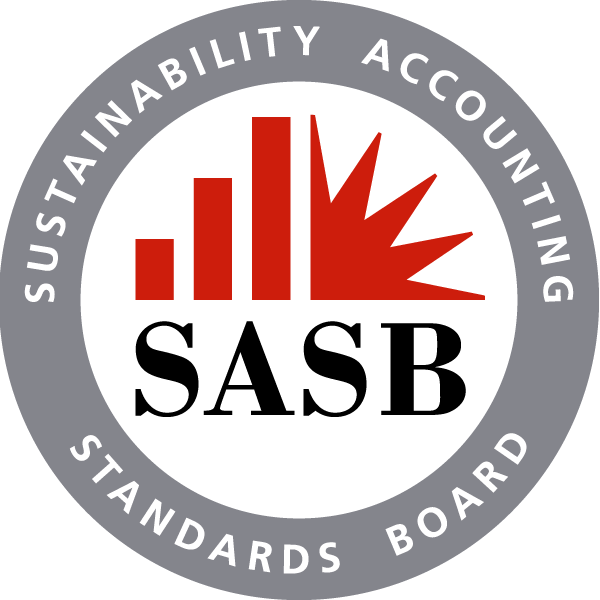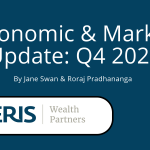Sustainable Transparency for Prosperity
By Anders Ferguson, Partner
Over the past 20 years, businesses and their investors have made serious efforts to be sustainably responsible and transparent.
The good news: We’re finally making real progress.
Everywhere we turn the focus on sustainability and transparency is gaining momentum. The reason is that sustainable business and investing has become a key driver of innovation and market leadership in the U.S. and internationally.
Concrete Evidence
Today, Sustainable and Impact investing makes up 12% of total U.S. assets – almost $4 trillion in wealth. Every day, companies large and small are integrating sustainable strategies into their business models. We see this in innovative new products created to meet growing demand from consumers who want to cast their dollar votes in favor of ideas that preserve Mother Earth or increase personal and community wellness.
At the same time, companies are scrutinizing their supply chains and prioritizing changes that enhance sustainability. Driving these efforts is the growing awareness that we’re all interconnected – as individuals and companies. None of us exist in a vacuum. We influence one another – positively or negatively. The choice is ours. The greening of the supply chain is helping build this critical mass and save money at the same time.
The Catalyst: Sustainable Investing Practices
The emerging interconnection between sustainable finance/investing and sustainable business practices is the catalyst for change.
Unlike the past, when investing themes such as commodities or small cap companies captivated investors, emerging sustainable business models are creating new and exciting investing themes that deliver both financial return and positive social benefit.
The savviest investors are starting to realize the upside. They understand that business models that promote sustainability are highly transformative across industries, societies and borders.
As a result, the investment opportunities are enormous. Sustainable business models are fundamentally reinventing global commerce. The hot investing themes aren’t about a single product, but rather systemic, positive change.
What’s Going on?
Investors are searching for a merger of their values and their worldview that’s based on a more holistic view of investment risk.
Progressive businesses are moving away from blindly placing profit ahead of everything else. Increasingly, businesses are considering the prosperity of workers and communities, as well as the bottom line.
They are creating new operating principles, including willingly reporting to shareholders the impacts they are having on the environment and communities. They are embracing new metrics and accounting systems to report and drive change.
Structural Change
The clearest indication that businesses are reinventing themselves is the creation of SASB – the Sustainable Accounting Standards Board. Even more positive, is how SASB is evolving in prestige and visibility. The appointments of Michael Bloomberg as Chair and Mary Shapiro as Vice-Chair are very welcome additions to the Board.

In business, we say that if you can’t measure it, you can’t improve it. In a few years new sustainable accounting standards will emerge that identify real impacts and hidden risks produced in the course of business. These standards create the baseline for US publicly traded companies to report material non-financial data pertinent to investors. Costs traditionally ignored as “externalities” – arising from dumping carbon, polluting oceans, draining watersheds or tolerating communities of vast poverty – will be more clearly reported on corporate balance sheets for all to analyze and measure.
Europe As Leader
Europe is a good example of how momentum is building for Sustainable and Impact investing.
In April, the European Parliament made history by passing a new law requiring its biggest companies to include sustainability factors in their annual financial reports. With a lopsided margin of 599-55, the Parliament voted to require the law to apply to publicly traded companies with more than 500 employees.

In their annual reports, these companies must address “policies, risks and results” in relation to “social, environmental and human rights impact, diversity and anti-corruption policies.” That’s another big step forward in promoting transparency and identifying the real costs of any business enterprise.
The Bottom Line
Where does all of this leave us? Why is it critical that we have a new financial accounting system to better report the risks and opportunities facing companies?
Comprehensive reporting is the new connective tissue between investors and business operations, creating a united front for delivering badly needed transformative change. For the first time, risks will be more accurately priced in, innovation will receive greater recognition and distortive subsidies will become more apparent. Much has been accomplished. We still have significant work to do.
In this environment, investors are actively encouraging transparency and positive change. They want to partner with progressive businesses that are creating a future of more sustainable abundance and much less destruction and waste of our societies and the environment.
Creating sustainable change takes radical transparency.







